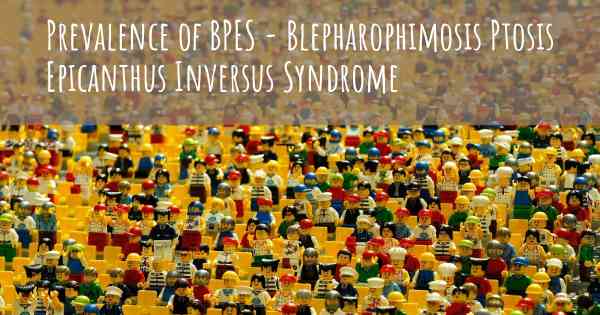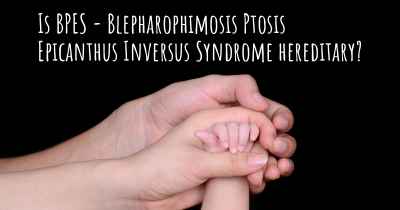What is the prevalence of BPES - Blepharophimosis Ptosis Epicanthus Inversus Syndrome?
How many people does BPES - Blepharophimosis Ptosis Epicanthus Inversus Syndrome affect? Does it have the same prevalence in men and women? And in the different countries?

The prevalence of BPES - Blepharophimosis Ptosis Epicanthus Inversus Syndrome is relatively rare and varies among different populations. It is estimated to affect approximately 1 in 50,000 to 1 in 100,000 individuals worldwide. This genetic disorder primarily affects the development of the eyelids, causing narrow eye openings (blepharophimosis), droopy eyelids (ptosis), and inwardly folded eyelid skin near the nose (epicanthus inversus). While BPES can be inherited, it can also occur sporadically. Early diagnosis and appropriate medical management can help individuals with BPES lead fulfilling lives.
BPES - Blepharophimosis Ptosis Epicanthus Inversus Syndrome is a rare genetic disorder that affects the development of the eyelids and surrounding facial features. It is characterized by four main features: blepharophimosis (narrowing of the eyelid openings), ptosis (droopy eyelids), epicanthus inversus (an upward fold of skin on the inner corner of the eyes), and telecanthus (widely spaced eyes).
Due to its rarity, the prevalence of BPES is not well-documented. However, it is estimated to occur in approximately 1 in 50,000 to 1 in 100,000 individuals worldwide. The syndrome can affect both males and females, with no specific ethnic or racial predilection.
BPES is typically inherited in an autosomal dominant manner, meaning that an affected individual has a 50% chance of passing the condition on to their children. However, in some cases, it can also occur sporadically without a family history.
Diagnosis of BPES is based on clinical evaluation, including a thorough examination of the eyelids and facial features. Genetic testing may also be performed to confirm the diagnosis and identify the specific genetic mutation involved.
Management of BPES often involves a multidisciplinary approach, including ophthalmologists, geneticists, and plastic surgeons. Treatment options may include surgical correction of eyelid abnormalities and other supportive measures to address associated symptoms.








